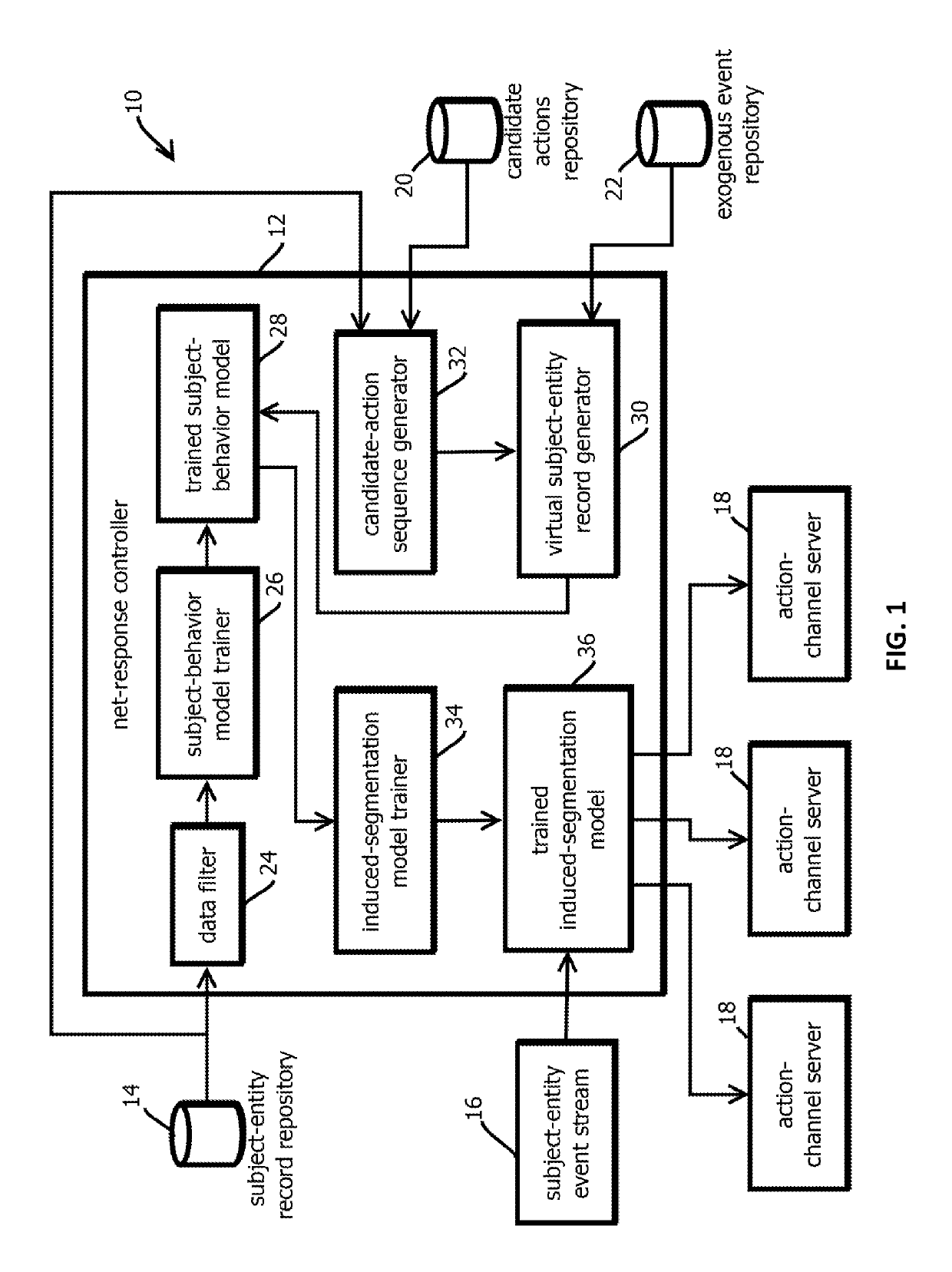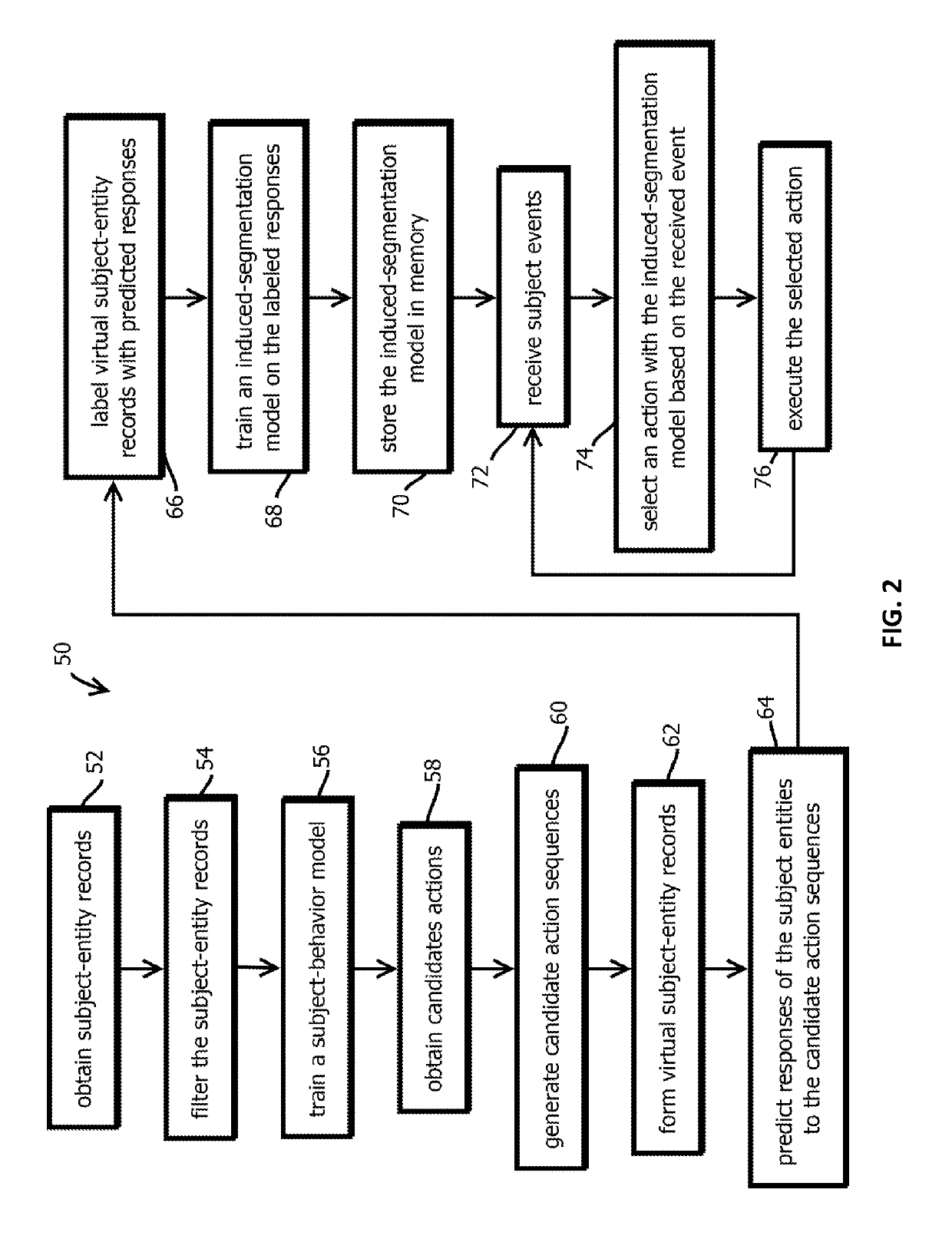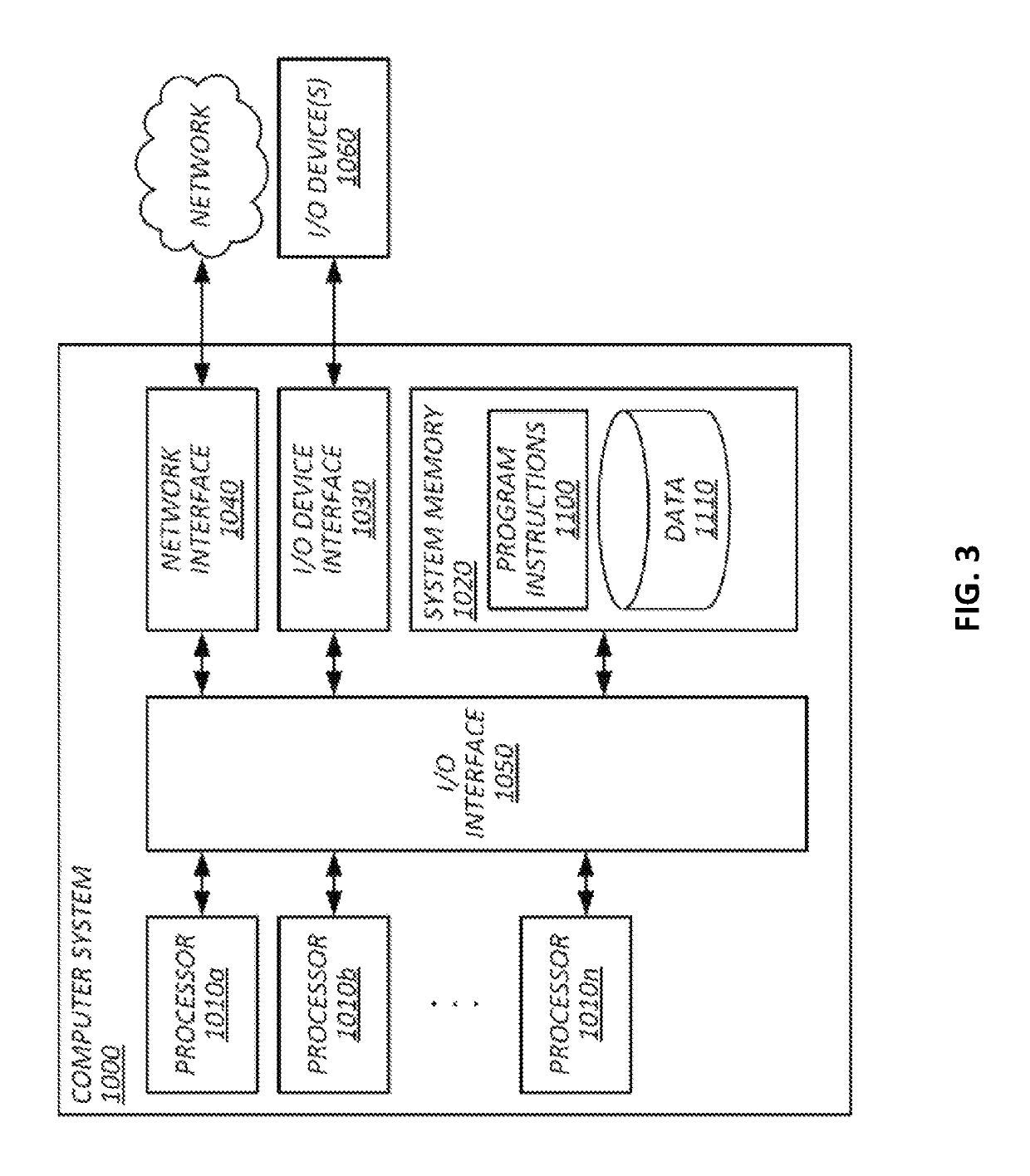Multi-stage machine-learning models to control path-dependent processes
a machine learning and path-dependent technology, applied in the field of computer learning, can solve the problems of reducing the effectiveness of the process, the sequence of actions needed to achieve the targeted state is relatively complex, and existing computational techniques often fail to predict whether a given act is necessary,
- Summary
- Abstract
- Description
- Claims
- Application Information
AI Technical Summary
Benefits of technology
Problems solved by technology
Method used
Image
Examples
embodiment 1
2. The medium of embodiment 1, wherein: the predicted responses account for both positive and negative utility attributed by the actor entity to predicted responses of subject entities.
3. The medium of any of embodiments 1-2, wherein: the operations comprise forming a plurality of groups by grouping members of a second population based on predicted responses to the candidate action sequences determined with the second machine-learning model based on attributes of members of the second population, the second population being either entirely different from the first population or sharing members with the first population.
embodiment 3
4. The medium of embodiment 3, wherein: at least some of the groups include members absent from the first population and for which grouping is performed based on attributes of the members without data describing previous interactions by the members with the actor entity; and features to which the second trained machine learning model is responsive are a subset of features to which the first trained machine learning model is responsive.
5. The medium of any of embodiments 1-4, wherein: the trained first machine-learning model is configured to predict responses of subject entities given previous time-series of events and attributes of the subject entities; the previous time-series of events include exogenous events that are distinct from attributes of subject entities; and the trained second machine-learning model is configured to classify subject entities based on which of the candidate action sequences are predicted by the trained first-machine learning model to cause or be correlate...
embodiment 5
6. The medium of embodiment 5, wherein the operations comprise: obtaining a plurality of scenarios in which different exogenous events occur; for a given one of the candidate action sequences, for the given subset of the virtual subject-entity records, forming a plurality of virtual subject-entity records each corresponding to a different one of the scenarios.
PUM
 Login to View More
Login to View More Abstract
Description
Claims
Application Information
 Login to View More
Login to View More - R&D
- Intellectual Property
- Life Sciences
- Materials
- Tech Scout
- Unparalleled Data Quality
- Higher Quality Content
- 60% Fewer Hallucinations
Browse by: Latest US Patents, China's latest patents, Technical Efficacy Thesaurus, Application Domain, Technology Topic, Popular Technical Reports.
© 2025 PatSnap. All rights reserved.Legal|Privacy policy|Modern Slavery Act Transparency Statement|Sitemap|About US| Contact US: help@patsnap.com



